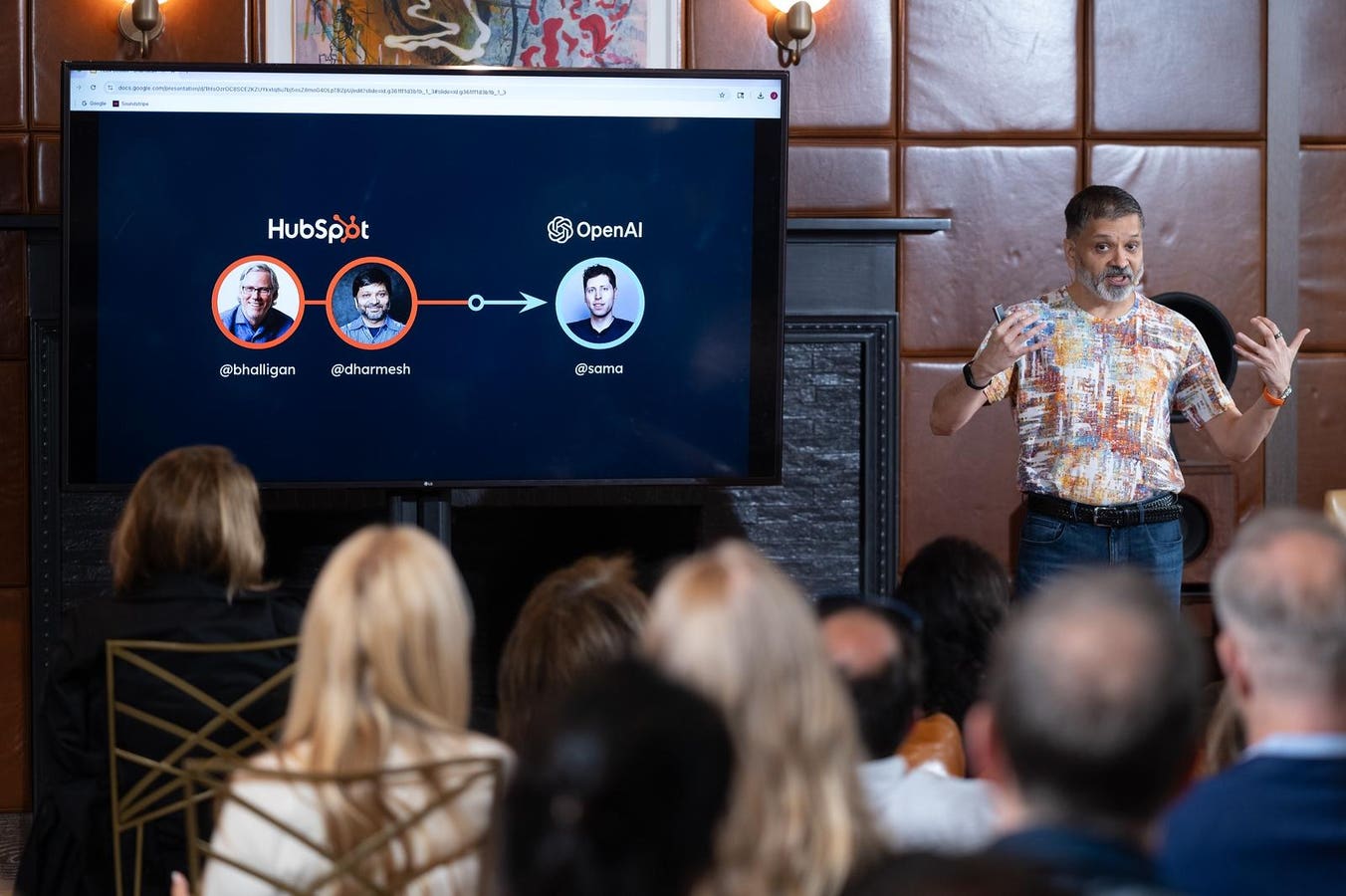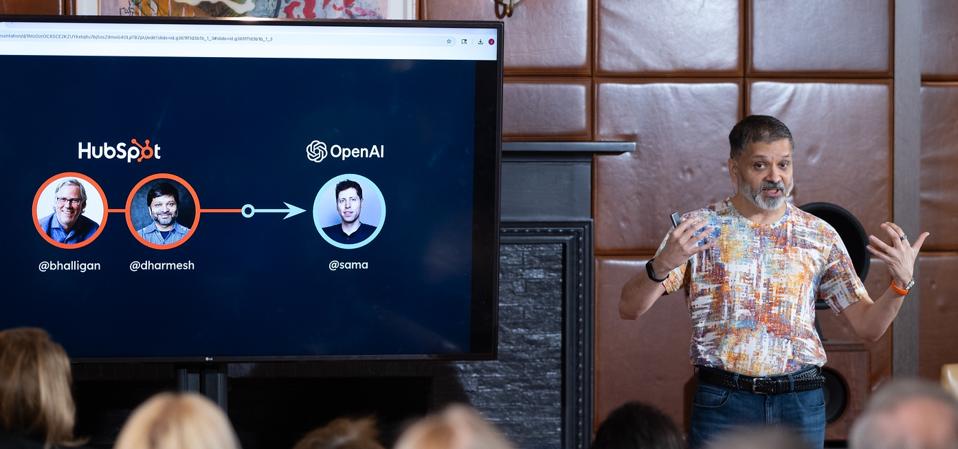Dharmesh and his call with Sam Altman
What are we going to do with AI? It’s a common question, sure, but it’s also phrased ambiguously. We’ll get back to that in a moment.
Within the spiraling complexity of the tech industry, people have many questions. There’s a good deal of uncertainty about exactly how our grand experiment with AI will work. Part of that involves the idea that unlike with past technology transformations, a portion of it will simply be out of our control.
It goes back to the idea, espoused by people like my friend Jeremy Werthheimer, that we are not exactly “engineering” LLMs, but “discovering” them and their capabilities.
In other words, how do you “use” something that can also imitate cognition? Are you using it, or is it using you?
And then there’s the big question of human sentiment. How do people feel about AI? And is that too general of a question?
Tomorrow’s Teams
Students at Work
One thing you get in this piece from Harvard is that there’s more than one way to view AI as a user. Taking the example of students in a younger age group, a cited study found half of them using generative AI, with most common uses being search and brainstorming.
The survey, which reached 1500 teens, showed how some people use it to cheat, and others use it in more positive ways.
“Of the teens surveyed, many admitted to using AI to cheat on assignments, homework, or tests,” writes Ryan Nagelhout. “But while academic integrity remains a concern for both adults and teens alike, many study participants highlighted positive academic experiences they’ve had with generative AI. AI was called “the modern approach to learning,” while other teens surveyed pointed out that “not all kids use it to cheat in school.”
So with that in mind, there’s a big difference between viewing this technology in a positive way, and viewing it negatively.
Going back to the idea of surveys and ambiguity, I recently saw this talk from Dharmesh Shah of HubSpot, where he asked a good number of people: “How will we compete with AI?”
What LLMs are like
As he pointed out, this has two meanings – competing against AI, and competing using AI. I have to admit that when I see the question, I think of it as competing against AI, because of the technology’s sometimes confounding powers to do what we do, better. But Shah revealed that in his survey, 66% of respondents saw it the other way, in collaboration, with 34% taking in the question the way that I did.
Referencing the year “2 B.C.” or “before ChatGPT,” he talks about answering questions such as: how does AI work, and where are we going with it?
Quoting figures like Geoff Hinton, who has famously become less ebullient after his early work on neural nets, Shah also makes some interesting little points that I think are aimed at insiders, as when he quips that “the token is what geeks use to charge by the syllable.” I found that funny.
AI will give you a better job
A Generational Tale
Here’s another part of Shah’s talk that I really wanted to focus on.
Further on in the presentation, he starts talking about his own origins in a village in India, where, he said, they didn’t have a TV, or even a refrigerator. Then he contrasted that with his son‘s experience as an aspiring author, in which the young man is already involved in what Shah called “world-building” (a la Star Wars or Lord Of The Rings?) a type of brilliant coding that allows him to explore the use of AI in an empowering way.
I thought this was a compelling way to talk about how the new generation may coexist with AI.
Pros and Cons
Another way to think about this is to enumerate the biggest fears about AI, like job displacement, ethical concerns regarding privacy, and the slow winnowing away of human intellectual powers. That’s balanced against the potential to help society in fields like medicine, and boost productivity across many industries.
Let me take a few more phrases from Shah’s talk that I think relate.
He referenced “simple interaction, sophisticated action,” a phrase that seems to speak to a balance – a contrast between a seemingly small process, and a meaningful step. He also encouraged humans to “be curious,” which seems to me to be the right way to encounter the technology. Instead of being fearful, or being mindlessly accepting – be curious, and don’t abdicate critical thinking powers.
Finally, he asked people to “dream big, but iterate small” – in other words, have a grand vision, but shepherd it carefully, in deliberate steps, rather than just lurching forward. Because, to some extent, we have to understand the technology well ourselves, to collaborate in the best ways.
More than the sum
Engaging with AI
To figure out what our approach will be, we first have to engage with the tech, in planned and thoughtful ways. It is all so brand new. Maybe in a few years, we’ll have developed a program for building that relationship – or maybe the children will figure it out for us.









